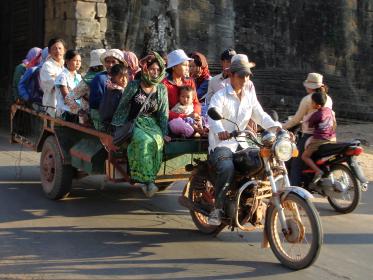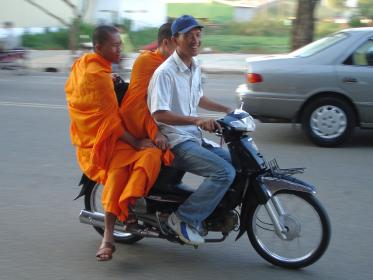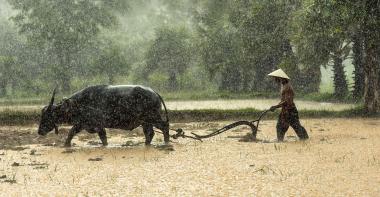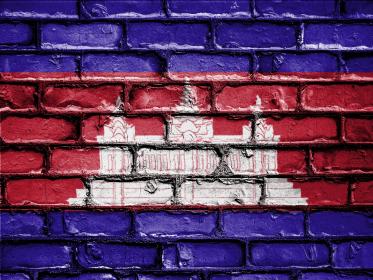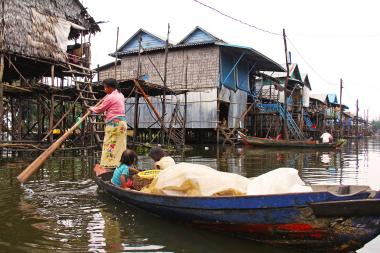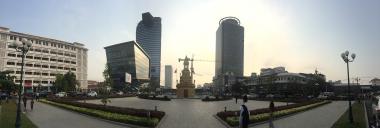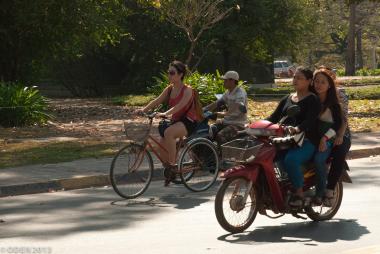CLOTHING INDUSTRY IN CAMBODIA WITH UNCERTAIN OUTLOOK
- Exports rise in the country's most important industrial sector.
Phnom Penh (GTAI) - Cambodia's clothing exports are growing steadily. However, two factors cloud the prospects for the future.
Cambodia's garment industry is the backbone of the Kingdom's export-oriented economy. Industry exports account for around 40 percent of the gross domestic product (GDP). More than 800,000 Cambodians are employed in over 800 companies. That is more than 85 percent of all factory workers in the country.
Apparel and footwear exports reached USD 8.0 billion in 2017, according to Cambodian customs. This represented an increase of 9.6 percent compared with 2016. Proud growth rates between 7 and almost 15 percent were already achieved in previous years. GTAI estimates on the basis of partner countries' imports an even higher export volume of around USD 12 billion.
More than 70 percent of the country's total exports of goods regularly come from the sector. Shoes accounted for exports of USD 873 million (+14.4 percent) in 2017. Foreign business with shoes has been improving for some years now and has been able to increase its share of exports to over 10 percent. With an unchanged share of 46 percent compared to the previous year, the EU continued to play a major role among the customers in 2017, followed by the USA with 24 percent.
The value-added volume of the sector is low and the road to an integrated textile industry in Cambodia is still long. Machines, raw materials and design come from abroad in the form of a CMT model ("Cut Make Trim"). Fabrics, yarns and haberdashery have to be imported in order to keep the local clothing industry "on the runway". In 2016, according to the United Nations Comtrade Database, USD 4.1 billion worth of textiles came into the country for processing - about 60 percent of which came from China. Textile imports have risen proportionally to clothing exports in recent years.
The garment industry is dominated by foreign companies, mostly from the Asian neighborhood China, Hong Kong (SVR), Singapore, Malaysia or South Korea. Many manufacturers produce to order for multinational brands such as Adidas, Puma, Gap, H&M, Marks & Spencer or Uniqlo. In principle, the complete contract manufacturing is intended for export.
Rising wages fuel fear of competition
After years of growth the sector is looking to the future with concern. The country is increasingly in danger of losing market share to its competitors - for example in Myanmar, Vietnam or Bangladesh - primarily due to rising wage costs. In January 2018, the monthly minimum wage for workers was raised to USD 170, up from USD 153. Compared to 2013, when a minimum of USD 80 was required by law, there has now been more than a doubling.
The annual agenda included regular increases of around 10 percent. According to the Cambodia Garment and Footwear Sector Bulletin of the International Labor Organization (ILO), workers who worked the full month, including overtime payments and incentives, were paid an average wage of just under USD 243 in 2017. Last year, it was USD 225.
In the past, low wages were mainly responsible for the attractiveness and competitiveness of Cambodian industry. This advantage is crumbling year after year as a result of the increase of minimum wages. An end to this politically motivated development is not in sight. The government can imagine, referring to expert recommendations, that minimum wages will be raised to USD 250 per month by 2023.
If the trend continues, companies are likely to migrate and not too many new investors will pitch their tents in Cambodia, critics warn. In 2017, sector companies invested nearly USD 270 million in 55 projects. This represented 5 per cent of the Kingdom's total investments. In the previous year, this share had been 9 percent.
Industry representatives complain that the costs grow faster than the productivity. Automation of production processes is becoming more and more urgent in order to keep up with productivity. However, both the lack of skilled workers and an infrastructure in need of improvement are serious bottleneck factors. There are also critics who are generally pessimistic about a possible automation in the sector. Cambodia could only score points through low labor cost advantages. Automated mass production is reserved for countries that have a reliable and cost-effective power supply and are closer to the sales markets.
Will the trade routes to the EU remain free?
Even more worrying would be the EU's cancellation of the preferential trading system EBA ("Everything But Arms"). Finally, the exemption of Cambodian clothing from customs duties is at stake on the main market. A discontinuation is likely to trigger a wave of migration of the clothing industry. Quite a few companies have taken the EBA initiative alone as an opportunity to establish themselves in the Kingdom.
In addition, the view wanders across the border to Vietnam. Manufacturers there could soon benefit from a free trade agreement with the EU. Vietnam is also participating at the Asia-Pacific Comprehensive and Progressive Agreement for Trans Pacific Partnership (CPTPP), while Cambodia remains outside. If the trade arrangements remain unchanged, Cambodia may get off with a black eye. However, the other factors should not be ignored. Transport and general export costs are also considered comparatively high compared with Vietnam or China.
Cambodian exporters are currently benefiting from the trade dispute between the USA and China. The National Bank of Cambodia (NBC) semi-annual report supports this assumption. According to the study, apparel and footwear exports rose by 11 percent in the first six months of 2018 compared to the same period of last year to reach a volume of USD 4 billion. Since July 2016, clothing, shoes and travel goods (suitcases, bags, etc.) can be delivered duty-free to the USA. According to the Garment Manufacturers Association of Cambodia (GMAC), shipments of travel goods to the USA in the first half of 2018 reached an amount of around USD 160 million - three times the previous annual exports.
Cambodia's imports of textile machinery amounted to USD 127.3 million (SITC 724) in 2017 according to the UN Comtrade database. This was 11.4 percent more than in the previous year. About 60 percent of the capital goods came from China; the remaining deliveries are relatively evenly distributed among other Asian countries. German deliveries only appear very sparsely in the statistics. Used machines from abroad are more likely to be in demand, but are not recorded statistically.


